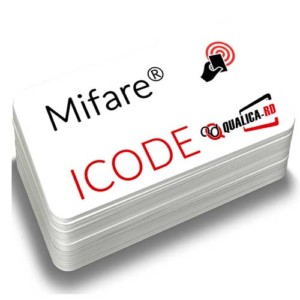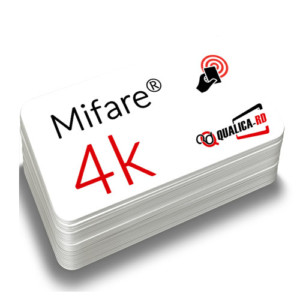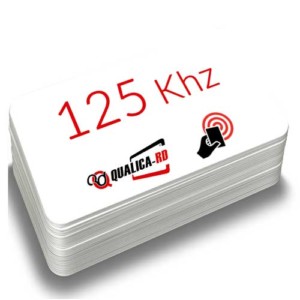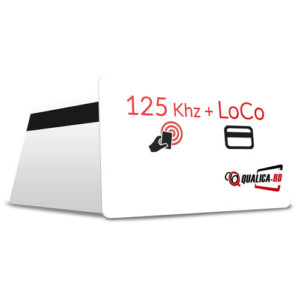MIFARE® EV1 NXP 1K 4B WHITE CARD
1. What is MIFARE®?
MIFARE® technology is a 13.56 MHz ISO 14443A and 14443B RFID technology manufactured by Philips.
MIFARE® is often referred to as a “smart card” technology. This is based on the fact that MIFARE® technology allows both reading and writing to the card. In reality, MIFARE® is simply a memory card in its Classic, Icode, Ultralight and if cryptographic (smart) in the Desfire, Plus, Ultralight C processor versions.
MIFARE® contactless smart cards and MIFARE® card reader/writers were initially developed for payment transactions in public transport systems. Due to its short read range, MIFARE® technology was particularly suitable for performing add/subtract functions. Although contact smart cards can also perform these functions, contactless readers are faster, easier to use and virtually maintenance-free. Contactless cards, on the other hand, suffer almost no wear and tear.
2. What is the typical reading range of MIFARE® contactless card readers?
The typical reading range of a MIFARE® contactless smart card reader is 2.5 to 10 cm for the Classic, Desfire, Ultralight, Icode versions and up to several meters for the Icode version (with special reader). In North America, due to FCC regulations, the reading range is at the bottom of the scale.
Can MIFARE® contactless card readers be used in existing access control systems?
MIFARE® contactless smart card readers can be used in conjunction with existing access control systems. There are some technical aspects to be considered:
The standard MIFARE® card is programmed from the factory by Philips with a unique 32-bit serial number. This is a random number that does not contain a location code. If you are using another bit format in your access control system and wish to use 32-bit MIFARE® cards/contactless readers simultaneously, be sure to verify that the access control system in use simultaneously accepts multiple bit formats and location codes.
4. What is the memory capacity of the MIFARE® cards?
It depends on the MIFARE® in question. Philips MIFARE® S50 module with one (1) Kbytes of EPROM memory. MIFARE®S70 4Kbytes of EPROM memory. Desfire, 2, 4, 8Kbytes, etc.
5. How many sectors do MIFARE® cards have?
The MIFARE® 1K card (the most common of them all) has 16 independent sectors that can be configured as “wallets” or for general information storage. The first sector (0) is commonly used as the card directory and contains the UID (block 0), leaving another 15 segments for data or “wallets”. Block 3 contains the security keys Key A and Key B so it is also not suitable for storing data.
6. How many applications can be accommodated on a single MIFARE® card?
In total, a maximum of 15 different applications can be stored on one MIFARE® card. These applications are separated individually using unique keys (passwords) for each sector. The only requirement is that the different application providers must cooperate in the programming of the MIFARE® Application Directory (MAD) and that the keys of these directories must be available to all application providers.
What ISO standard do MIFARE® cards comply with?
MIFARE® is a 13.56 MHz non-contact technology, described in the ISO 14443 Type A (Classic) and B (Desfire) standard. This card is designed to allow you to embed an optional contact smart chip module. If so, the card would also comply with ISO 7816. This card is designed to have a magnetic stripe. In the magnetic stripe configuration, the card also complies with ISO 7811.
8. Is the MIFARE® information encrypted?
The radio frequency data transmission between the card and the MIFARE® reader is encrypted. However, the data we store on the card is not encrypted. Access to the data is protected by a 48-bit key, so it can only be read by a reader containing the correct key.
MIFARE® technology enables mutual authentication between the card and the reader. A random number is generated and, according to the keys, a message is sent from the card to the reader. The reader then sends a message to the card. This operation is performed three times to verify that the card presented to the reader is valid.
*** Translated with www.DeepL.com/Translator (free version) ***






